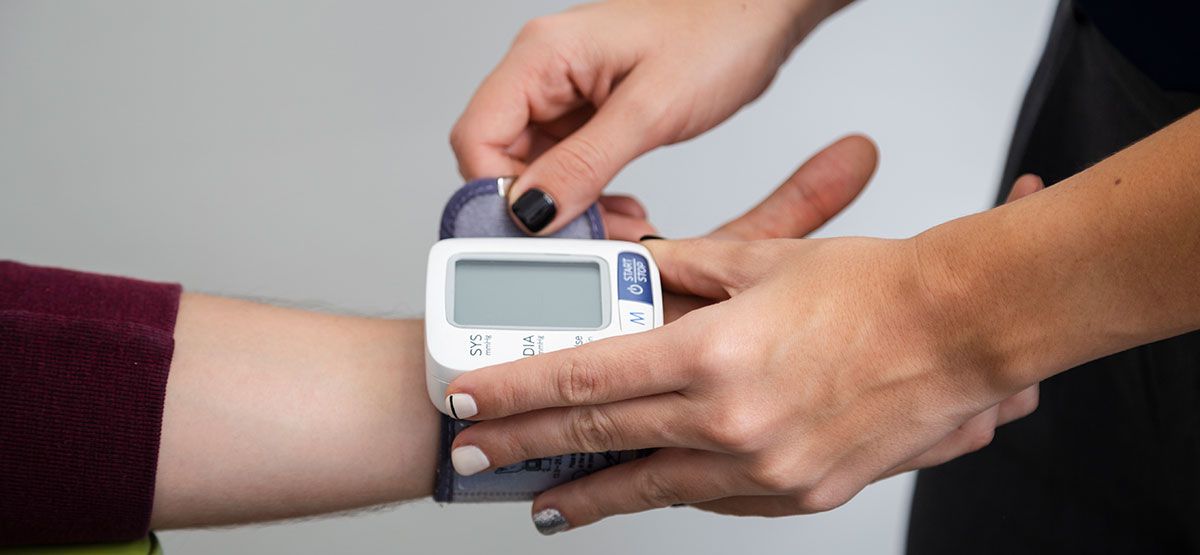
Understanding FDA Requirements for Unique Device Identification (UDI) Compliance
The healthcare industry prioritizes patient safety, effective treatment, and regulatory adherence. A crucial part of this framework is the Unique Device Identification (UDI) system, introduced by the U.S. Food and Drug Administration (FDA) to ensure that each medical device is uniquely identifiable, traceable, and compliant with regulatory standards. For medical device manufacturers, understanding and meeting FDA UDI requirements is essential to bring devices to the U.S. market and to manage them effectively over their lifecycle. In this article, we’ll cover what FDA UDI compliance entails, the core components of UDI, the steps manufacturers need to take, and the broader impact of this system on the medical device industry.
What Is Unique Device Identification (UDI)?
The unique device identification system is a globally recognized framework that enables precise tracking of medical devices. Each medical device is assigned a unique device identification number, which serves as a “digital fingerprint” for the product. The UDI includes critical information about the device’s version or model and its production details, making it easy to identify, track, and recall, if necessary.
The FDA’s UDI rule applies to most classes of medical devices, and manufacturers must meet these requirements to ensure their products are safely and effectively managed in the healthcare environment.
Why FDA UDI Compliance Is Essential for Medical Devices
FDA UDI compliance serves several vital purposes, including:
- Enhanced Patient Safety: By uniquely identifying devices, UDI enables faster response times for recalls or safety notifications.
- Improved Traceability: With each device uniquely identified, manufacturers and healthcare providers can easily track devices throughout their lifecycle.
- Regulatory Adherence: FDA mandates UDI for many medical devices, meaning that compliance is necessary to legally market products in the U.S.
Non-compliance can lead to penalties, restricted market access, or delayed regulatory approvals. Consequently, meeting UDI requirements is not only a legal necessity but also a step toward enhancing operational efficiency and brand trust in the healthcare industry.
Key FDA Requirements for UDI Compliance
FDA UDI compliance involves a series of guidelines that manufacturers need to adhere to. Let’s look at the primary requirements:
1. UDI Structure: Device Identifier (DI) and Production Identifier (PI)
A UDI comprises two primary components:
- Device Identifier (DI): This part of the UDI is specific to the device model or version and remains consistent for each device of that type.
- Production Identifier (PI): This segment includes variable information, such as the device’s serial number, lot or batch number, expiration date, and manufacturing date.
The combination of DI and PI ensures that each device can be uniquely identified and traced, making it easier to manage product recalls and post-market surveillance.
2. Labeling and Marking Requirements
The FDA requires that the UDI be prominently displayed on the device’s label and packaging in both human-readable and machine-readable formats, such as barcodes or QR codes. For certain devices, like those intended for re-use or that must be sterilized, the UDI must be directly marked on the device itself.
The labeling requirements ensure that the UDI is accessible and readable by both healthcare providers and automated systems, enabling quick identification in real-world settings. Compliance with labeling requirements is essential, as improper labeling can lead to fines and delays in device approval.
3. Submission to the Global Unique Device Identification Database (GUDID)
To meet FDA requirements, manufacturers must submit UDI data to the Global Unique Device Identification Database (GUDID). This public database stores UDI information, allowing healthcare providers, patients, and the FDA to access accurate data about medical devices.
Manufacturers need to register their devices and maintain updated records in GUDID, which includes key device details like:
- Manufacturer name and contact information
- Device version or model
- Regulatory classifications and intended use
By ensuring UDI data is available in the GUDID, the FDA can monitor device performance, manage recalls more effectively, and conduct market surveillance.
4. Class-Specific Compliance Timelines
FDA UDI compliance is implemented across different classes of medical devices, with each class having specific timelines. Devices are typically categorized into three primary classes based on risk:
- Class I (Low Risk): Devices like bandages or surgical instruments.
- Class II (Moderate Risk): Devices such as catheters and infusion pumps.
- Class III (High Risk): High-risk devices like pacemakers or heart valves.
While most Class II and Class III devices are already required to comply with FDA UDI rules, Class I devices have been given more time. Understanding these timelines helps manufacturers prioritize compliance according to the FDA’s phased approach.
Steps for Medical Device Manufacturers to Achieve UDI Compliance
To achieve FDA UDI compliance, manufacturers must follow a systematic approach:
1. Establish a UDI Implementation Strategy
Creating a UDI implementation strategy is the first step. This involves determining which devices require UDI, understanding labeling and marking needs, and identifying any special requirements for direct marking. Having a clear strategy ensures that all compliance aspects are met without significant delays.
2. Invest in Labeling and Data Management Systems
Manufacturers should invest in labeling systems that can handle both human- and machine-readable UDI formats. High-quality barcode printing and scanning systems are essential to ensure UDI accuracy. Additionally, data management systems are crucial to keep records updated in the GUDID, track device distribution, and simplify recall processes.
3. Integrate UDI Compliance with Quality Management Systems (QMS)
FDA regulations require medical device manufacturers to implement and maintain a Quality Management System (QMS). Integrating UDI requirements within the QMS framework enables seamless compliance, as it combines all aspects of device production, quality control, and regulatory adherence under a single system. The QMS can serve as a foundation for managing UDI-related data and tracking the lifecycle of each device.
4. Conduct Regular Audits and Training
Ensuring UDI compliance requires ongoing audits and training for staff involved in manufacturing, labeling, and quality control. Audits can identify potential compliance issues early on, while training ensures that employees understand FDA UDI requirements and know how to implement them correctly.
The Broader Impact of FDA UDI Compliance on the Medical Device Industry
The FDA’s UDI system has broad-reaching impacts across the healthcare industry, bringing a range of benefits and challenges:
1. Enhanced Patient Safety and Device Reliability
With UDI, healthcare providers can quickly identify devices, access accurate usage information, and address any recalls or adverse events more efficiently. This transparency enhances patient safety and supports more reliable device usage in healthcare settings.
2. Simplified Device Recalls and Incident Reporting
FDA UDI compliance enables more efficient recall processes, allowing manufacturers to quickly retrieve affected devices by their unique identifiers. Incident reporting also becomes faster and more accurate, as healthcare providers can report specific devices involved in adverse events.
3. Increased Cost and Time Investments for Manufacturers
Achieving UDI compliance can be costly for manufacturers, particularly in terms of labeling technology, data management, and training. While the upfront costs can be substantial, these investments lead to better compliance management and potential long-term savings in recall-related expenses.
4. Improved Data Analytics and Market Surveillance
With UDI data accessible through the GUDID, healthcare providers, regulatory bodies, and manufacturers gain valuable insights into device performance, usage trends, and market demand. This data improves the industry’s ability to detect emerging issues, adapt to market changes, and enhance product development.
Overcoming Common Challenges in UDI Compliance
The path to UDI compliance comes with challenges, such as:
- Complex Regulatory Landscape: Navigating UDI requirements alongside other global regulatory standards can be challenging, especially for international manufacturers.
- Technology Integration: Implementing new labeling systems, database management, and quality control systems requires investment and can disrupt existing workflows.
- Data Accuracy: Ensuring that UDI data is correctly formatted and regularly updated in the GUDID demands ongoing attention and resources.
Manufacturers can overcome these challenges by collaborating with regulatory consultants, investing in the right technology solutions, and conducting regular audits to ensure continuous compliance.
Conclusion
FDA UDI compliance is a cornerstone of modern medical device manufacturing, enhancing device traceability, safety, and quality across the healthcare industry. By adhering to UDI requirements—such as proper labeling, GUDID submission, and class-based compliance timelines—manufacturers not only fulfill regulatory obligations but also improve patient safety, streamline recalls, and gain valuable market insights. While UDI implementation can
Get the latest updates from DDi
Explore Topics
- Automation & AI (12)
- Clinical Automation (9)
- Consumer Health (1)
- IRT & Clinical Supplies (23)
- Labeling (16)
- Regulations (26)
- Regulatory Automation (14)
- Regulatory Biopharma (3)
- Regulatory Content Management (5)
- Regulatory Information Management (23)
- UDI (11)
- Writing (12)
Recent Blogs
 Usability: Enhancing Global eI…Regulations
Usability: Enhancing Global eI…Regulations Technical Documentation for De…Automation & AI
Technical Documentation for De…Automation & AI Clinical Supplies Forecasting …IRT & Clinical Supplies
Clinical Supplies Forecasting …IRT & Clinical Supplies
Previous Post
Next Post
Related Posts
CONNECT WITH US

Let's talk about how DDi can help you

